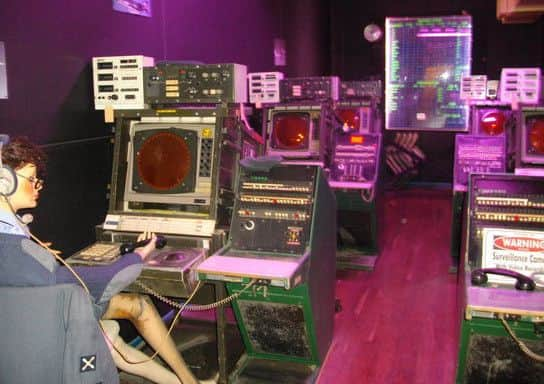Scotland's hidden wonders: Scotland's Secret Bunker


WHAT IS IT?
The red-tiled and stone bungalow may appear to be a normal Fife farmhouse, but it conceals something extraordinary: a nuclear bunker and command centre that was stashed 100 feet underground for over 40 years until its decommissioning in 1992.
The site itself occupies 24,00 sq ft over two levels. A three-tonne blast-proof door protects the entrance to the bunker at the end of a 150ft-long tunnel, with the bunker containing a command centre, dormitories, chapel and a BBC broadcasting studio.
Advertisement
Hide Ad

Scotland’s secret seat of government would’ve been a home for prominent Scottish politicians, defence experts and other beauracratic personnel.
WHERE IS IT?
Scotland’s Secret Bunker used to be a hidden site of utmost importance to the RAF and Ministry of Defence alike. These days, anyone can visit the attraction, approximately three miles north of Anstruther. To get there, you can take the B940 road via car or bus before reaching a short private road, where the bunker is located. A bus stop one mile away from the bunker also services the nearby towns of Anstruther and St Andrews.
WHEN WAS IT BUILT?


Built only six years after the end of the Second World War, Troywood was originally used as a radar station to detect intrusions on British airspace from the East, but the pace of technology soon rendered it obsolete. It was repurposed as a nuclear command centre in the 1970s before falling into disuse at the end of the 1980s following the fall of the Soviet Union.
In 1993, one year after its decommissioning, the bunker was purchased by two brothers who opened it in 1994 as a tourist attraction.
WHO DESIGNED IT?
Following standard Ministry of Defence protocol for a “Rotor” radar station, the Troywood bunker was given an “entrance bungalow” reinforced with steel behind the brickwork to protect the guards within.


In order to help the bunker blend into its Scottish surroundings, it was given its distinctive red roof tiles that have retained to this day.
IS IT A TOURIST ATTRACTION?
Advertisement
Hide AdScotland’s Secret Bunker is one of the country’s most popular military attractions and is open during the spring and summertime. With an extensive collection of Second World War and Cold War-era exhibits, the bunker includes weapons, personal and official documents and military vehicles on-site.
IS THERE OTHER INSTALLATIONS LIKE IT?


Two other sites within Scotland are comparable to the Secret Bunker, with ex-PoW camp Cultybraggan in West Perthshire briefly realised as a Regional Government Headquarters post following the closure of Troywood. It, too, succumbed to cost-cutting measures after the Cold War, and it stopped being used by the military in 2004 and sold to the Comrie Development Trust with its fate uncertain.
Advertisement
Hide AdWest of Edinburgh lies Barnton Quarry, near Clermiston Road. After RAF use in the Second World War was discontinued, it too was renovated into a nuclear bunker before its identity was revealed by the rogue Spies for Peace activist group in 1963. It is currently abandoned due to the spread of asbestos following a fire in the 1990s.
DID SCOTLAND REALLY BELIEVE IT WAS IN DANGER OF NUCLEAR ATTACK?
Despite intense diplomatic efforts across Europe, it appears that the whole country was preparing extensively for the worst-case scenario. Had nuclear conflict ever taken place, members of the then-Scottish Office, British Telecom, the BBC and cabinet ministers would have been taken to any one of the three Scottish or 11 other Regional Seats of Government scattered throughout the UK.